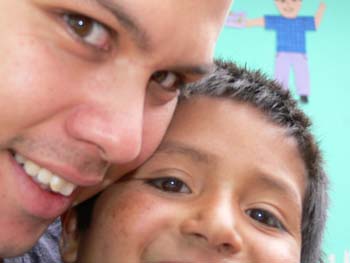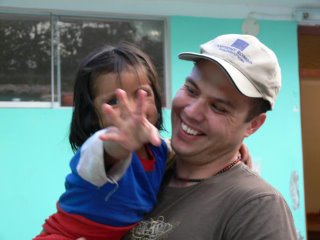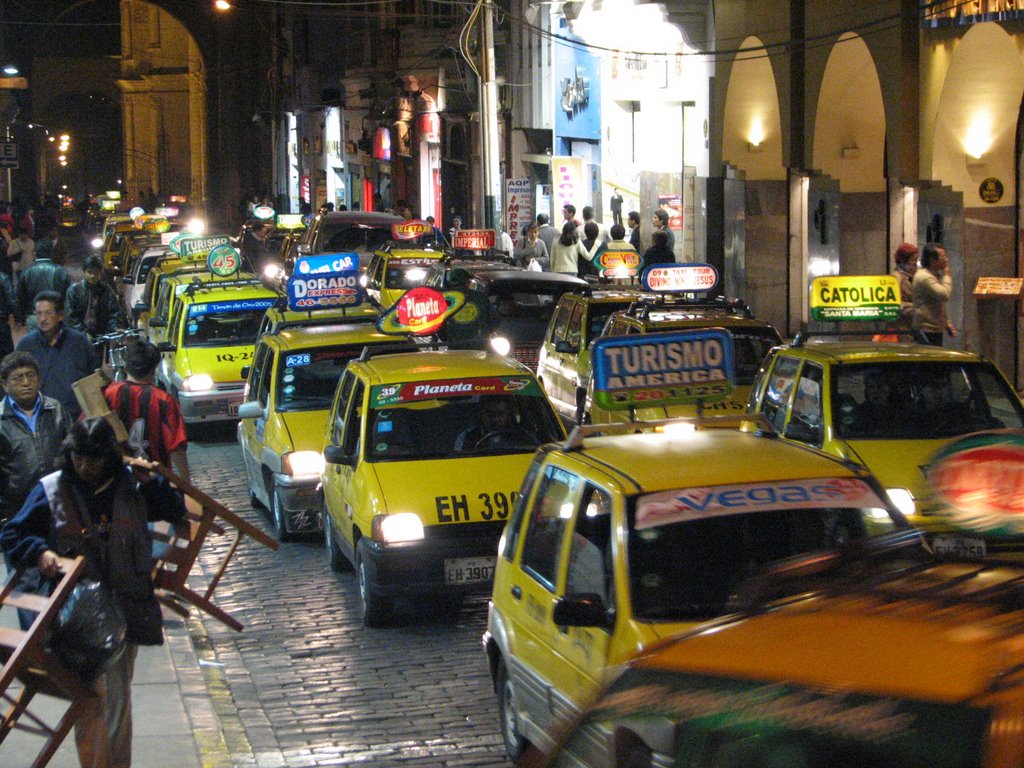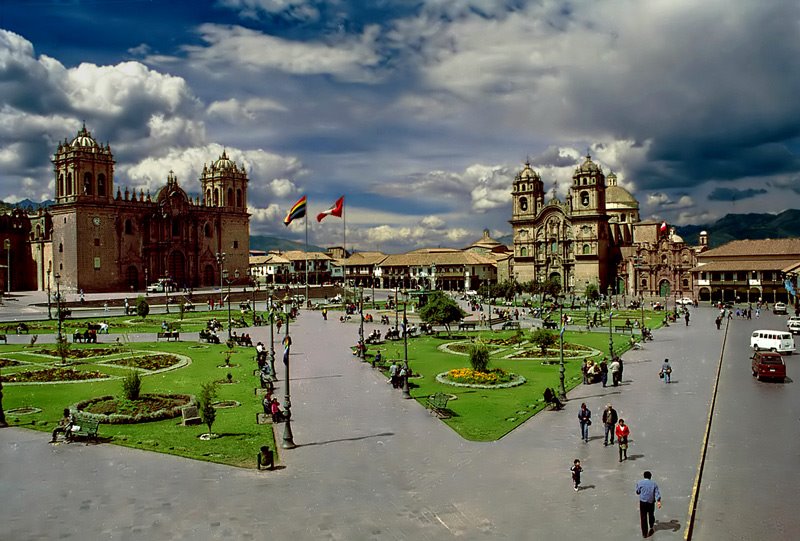Life Trove
A celebration of treasured moments
10 May 2006
Question: Ladies, where does the red in your lipstick come from?
Answer: From the blood of squished bugs (yes, seriously!)
Five steps to ruby red lips
Step 1: Find a cactus in the Colca Canyon in Peru (not hard, they are everywhere)
Step 2: Chances are it will have parasitic bugs on it (most of them do)
Step 3: Carefully extract the bugs from the cactus (make sure you do not prick yourself)
Step 4: Squish the bugs. (You won't believe the copious amounts of bright red gunge you will get)
Step 5: Apply to the lips for a sexy, glossy finish. (Men will be impressed and want to kiss you immediately - or maybe not)
Yes, these bugs are the primary export of the Colca Canyon, sold by the locals to the cosmetic industry (by whom they are much sought) for use in lipstick. The locals painstakingly pick them off the cacti every 3 months. A kilogram of bugs (that a whole lot of bug) gets them $ 50.
Revlon probably wouldn't want you to know (or believe this) but it is true nevertheless!
Oh, and the bug juice is also used by western factories as a colourant for some yoghurt, mainly strawberry and black cherry (which happen to be my favourite flavours). Fancy that, I have been pouring bug blood onto my cereal all these years.
I am just suprised that Hollywood "splat" directors have not discovered it yet for their special effects. Or maybe they have. I am sure Tarantino would relish the idea of covering his actors in insect goo if it added to the realism of his scenes.
Labels:
backpacking,
cactus,
fun,
Peru,
South America 2006,
travel,
weird
Meet Erik
Erik is another really inspiring guy I have met (on the Inca Trail). He has recently sold his successful business in Canada and is now doing some travelling before starting another.
He is also on a mission to visit and work in several orphanages in South America to get a first hand knowledge of their needs so he can set up a foundation for kids in Canada. An amazing guy.


He is also on a mission to visit and work in several orphanages in South America to get a first hand knowledge of their needs so he can set up a foundation for kids in Canada. An amazing guy.


Labels:
friends
9 May 2006
Condors
Ah, and the condors! The condor population of South America is unfortunately dwindling, but here in Colca Canyon, we were able to see them at close range as they floated on the rising thermals and scanned for carrion far below them.
Labels:
2006,
backpacking,
birding,
Peru,
South America 2006,
travel,
vulture,
wild birds,
wonders
8 May 2006
Arequipa
Arequipa is Peru´s second-largest city and being not very fond of large cities, I had no great expectations. My mistake. It is a delightful place, not least as it is home to a restaurant that serves gorgeous Argentianian steaks.
It also is scenically beautiful, standing at the foot of the snow-capped volcano El Misti.
Arequipa also has many fine colonial-era Spanish buildings built of sillar, a pearly white volcanic rock used extensively in the construction of the city, from which it gets its nickname La Ciudad Blanca ("the white city").
Here is a photo of El Misti, the Volcano. I could have climbed this 5800 metre mountain but felt too lazy. We opted to descend into the world's deepest canyon instead.

Arequipa is home to the greatest multitude of little yellow taxis I have ever seen in one place.

The view from our hostel roof (not bad!)

The town square at night. We walked the square (and the city) looking for laces for my boots. No-one stocked them, not even shoe stores (we visited at least 10)! I would have paid a small fortune for them by the end. Found them eventually and couldhave kissed the store owner. I hugged him instead.

It also is scenically beautiful, standing at the foot of the snow-capped volcano El Misti.
Arequipa also has many fine colonial-era Spanish buildings built of sillar, a pearly white volcanic rock used extensively in the construction of the city, from which it gets its nickname La Ciudad Blanca ("the white city").
Here is a photo of El Misti, the Volcano. I could have climbed this 5800 metre mountain but felt too lazy. We opted to descend into the world's deepest canyon instead.

Arequipa is home to the greatest multitude of little yellow taxis I have ever seen in one place.

The view from our hostel roof (not bad!)

The town square at night. We walked the square (and the city) looking for laces for my boots. No-one stocked them, not even shoe stores (we visited at least 10)! I would have paid a small fortune for them by the end. Found them eventually and couldhave kissed the store owner. I hugged him instead.

Labels:
2006,
backpacking,
Peru,
South America 2006,
travel
7 May 2006
St Catalina Monastery (Arequipa)
We spent a fascinating couple of hours exploring the St Catalina Monastery in Araquipa. It is absolutely enormous (a veritable city within a city, covering a full city block) and is a photographic delight with its multitude of colours, ornate doorways and plethora of secret nooks and crannies.
The monastery has a very interesting and slightly sinister history (which of course, adds immeasurably to its allure).
It was founded in 1580 and a wealthy widow decided to retire from the world and become the first resident of the monastery. Over time, the monastery grew and many women of wealth and social standing entered the monastery as nuns. Many of them brought with them their servants and household goods, and lived within the walls of the monastery as they had lived before.
While outwardly renouncing the world and embracing a life of poverty, they enjoyed their luxurious English carpets, silk curtains, porcelain plates, damask tablecloths, silver cutlery, and lace sheets. They employed musicians to come and play for their parties.
By the mid 1800's, word that the monastery functioned more as a social club than a religious convent reached Pope Pius IX who sent Sister Josefa Cadena, a strict Dominican nun, to investigate.
She arrived at the Monasterio Santa Catalina in 1871 and some serious shit hit the fan!!
She sent the servants packing and instigated strict reforms, including a stringent rule of no contact with the outside world, mortification of the body through wearing barbed wire underwear (we saw samples and they looked nasty, definitely not the lacey and frilly kind!), self flagellation with leather whips and strict fasting.
In 1970, when the civic authorities insisted the monastery install electricity and running water (none until then!), the now poor community of nuns elected to open the greater portion of the monastery to the public in order to pay for the work.
The few remaining nuns retreated to a corner of their community and the remainder became one of Arequipa’s prime tourist attractions.
Below are some photos from within the monastery. It is now beautifully restored and a very beautiful place.
On the very rare occasions that a nun was allowed contact with the outside world, it could only be through this double wooden barred window. No doubt the Mother Superior also listened in over the nuns shoulder. Not exactly a recipe for intimate chats!
The monastery has a very interesting and slightly sinister history (which of course, adds immeasurably to its allure).
It was founded in 1580 and a wealthy widow decided to retire from the world and become the first resident of the monastery. Over time, the monastery grew and many women of wealth and social standing entered the monastery as nuns. Many of them brought with them their servants and household goods, and lived within the walls of the monastery as they had lived before.
While outwardly renouncing the world and embracing a life of poverty, they enjoyed their luxurious English carpets, silk curtains, porcelain plates, damask tablecloths, silver cutlery, and lace sheets. They employed musicians to come and play for their parties.
By the mid 1800's, word that the monastery functioned more as a social club than a religious convent reached Pope Pius IX who sent Sister Josefa Cadena, a strict Dominican nun, to investigate.
She arrived at the Monasterio Santa Catalina in 1871 and some serious shit hit the fan!!
She sent the servants packing and instigated strict reforms, including a stringent rule of no contact with the outside world, mortification of the body through wearing barbed wire underwear (we saw samples and they looked nasty, definitely not the lacey and frilly kind!), self flagellation with leather whips and strict fasting.
In 1970, when the civic authorities insisted the monastery install electricity and running water (none until then!), the now poor community of nuns elected to open the greater portion of the monastery to the public in order to pay for the work.
The few remaining nuns retreated to a corner of their community and the remainder became one of Arequipa’s prime tourist attractions.
Below are some photos from within the monastery. It is now beautifully restored and a very beautiful place.
On the very rare occasions that a nun was allowed contact with the outside world, it could only be through this double wooden barred window. No doubt the Mother Superior also listened in over the nuns shoulder. Not exactly a recipe for intimate chats!
Labels:
2006,
backpacking,
Peru,
South America 2006,
travel
6 May 2006
Goodbye Russell
It was extremely sad to say goodbye to Russell. He left yesterday for Lima and will head back to Cape Town from there. He has applied to be on South African survivor (we all wrote his application essay together on the trip) so will hopefully return to interviews. We traveled so well together and had such fun that we felt like were loosing part of ourselves.
Russell´s highlights (in his words) were:
His lowlights were:
But much more good than bad, we all had a ball. Rusty, it won´t be the same without you!
Russell´s highlights (in his words) were:
- Exploring the Uyuni Salt Pans in Bolivia
- Swimming with dolphins in the Bolivian Pampas
- Seeing the Machu Picchu ruins from Huayna Picchu
- Finding the geocache after an exhausting hike up two hill on Amantani Island (Lake Titikaka)
- Skeltering down the World´s most dangerous road on mountain bikes
- Being sick in Rurrenabaque
- Having his passport and wallet stolen on the bus to Cusco
- Back to back, claustrophobic bus journeys in Bolivia
Labels:
backpacking,
friends,
Peru,
Russell,
South America 2006,
travel
5 May 2006
Cusco
After the Inca Trail, we came back to Cusco. Amazingly, we saw Pete and Donna in the square – they had been delayed due to an airstrike. It was wonderful to catch up with them. Cusco is a wonderful town to chill out in, full of amazing restaurants and cheap (but great) massages. We look forward to charging our batteries before hiking Canyon del Colca down south. We hear it is as strenuous as The Inca Trail. Oh dear!

Update (Ally)
After walking it was rather nice to get back to a city for a while. As we arrived in Cusco we met Pete and Donna just by chance on the square. It was super to bump into them and catch up but I was sorry that we were too tired to go to dinner with them.
The next day we said a very sad farewell to Russell. Travelling will certainly not be the same without him.
We went for a delicicous hamburger on the Square and bascially slept the whole day. We met our group, from the Inca trail, that night and had a delicious Mexican meal.
The next day we went to Jacks (the best food in the city) and had breakfast with Angelina and Jaan from the hostel. Then we saw Kristy and Bruce who we knew from the pamapas. It was a wonderfully social time and certainly created a feeling of belonging for me. I love bumping into people and catching up with them.
We both went for a massage – they tout on every corner – and it was heaven. G was a little disconcerted when they pulled down his underpants to massage his bum but he loved it.
I had a great potter around the markets and found a picture which I just feel in love with. I took G back and thank goodness he liked it too. So after much hard bargaining we are now the proud owners of our first painting.
To while away a couple of hours before our bus left for Arequipa. I went to the Inca museum. And I am very gald that I did as I had seen the ruins but not the artifacts.
The exhibtion helped me see the Inca´s as real people rather than just a race who built or who are featured as a Tintan cartoon.

Update (Ally)
After walking it was rather nice to get back to a city for a while. As we arrived in Cusco we met Pete and Donna just by chance on the square. It was super to bump into them and catch up but I was sorry that we were too tired to go to dinner with them.
The next day we said a very sad farewell to Russell. Travelling will certainly not be the same without him.
We went for a delicicous hamburger on the Square and bascially slept the whole day. We met our group, from the Inca trail, that night and had a delicious Mexican meal.
The next day we went to Jacks (the best food in the city) and had breakfast with Angelina and Jaan from the hostel. Then we saw Kristy and Bruce who we knew from the pamapas. It was a wonderfully social time and certainly created a feeling of belonging for me. I love bumping into people and catching up with them.
We both went for a massage – they tout on every corner – and it was heaven. G was a little disconcerted when they pulled down his underpants to massage his bum but he loved it.
I had a great potter around the markets and found a picture which I just feel in love with. I took G back and thank goodness he liked it too. So after much hard bargaining we are now the proud owners of our first painting.
To while away a couple of hours before our bus left for Arequipa. I went to the Inca museum. And I am very gald that I did as I had seen the ruins but not the artifacts.
- I saw pottery from the 850BC (from the pre-Inca civilisations). All very fragile with no decoration. Then they had pottery from the Inca times which span a number of centuries. It consisted mainly of crokery and cooking stoves.
- Their weapons were scary with solid star shaped metal objects on the ends of ropes which they threw at enemies or animals.
- The stone working tools were cool to see as they had enormous chisles to smooth and carve the rocks used for their buildings. There are were also many pestle and mortars. (A civilisation after my own heart). They were used to work a number of things from colouring and food to gold.
- I also saw pictures of Machu Piccu when it was first being cleared in 1912. It was overgrown with plants and trees and certainly not its prestine self it is today.
- When the Spanish arrived the Inca royalty definately decided to enjoy some of the fine living the Spanish had. (This is a fact that the Quecha guides don´t boast about).
- I got to see the book which was written about the Inca´s history in the 1600´s. (I think it was written by a Spaniard). This book is supposed to have inspiried the anti-colonial movement in Peru through the 18th and 19th centuries. (I found it all rarther ironic).
The exhibtion helped me see the Inca´s as real people rather than just a race who built or who are featured as a Tintan cartoon.
Labels:
2006,
backpacking,
friends,
Peru,
Russell,
South America 2006,
travel
4 May 2006
Machu Picchu
As soon as we laid eyes on it, we knew why Machu Picchu is considered by many to be the most spectacular archaeological sites in South America. It retains its air of grandeur and mystery, no matter how many tourists are trampling over it (literally thousands in the high season) and its location, nestled in high mountains falling away to bottomless river valleys, is nothing short of breathtaking.
Machu Picchu was built by the Incas sometime in the 1400´s, not long before the Spanish arrived. It was then mysteriously deserted at the end of the century for reasons we can only guess at. There are many theories which only add to the delicious mystery. The Spanish never discovered it and the city lay unknown for hundreds of years before its discovery (in the "Western sense") by an American in 1911.
We left Agua Caliente at the crack of dawn to climb the 1000 or more steps to the site. The bus was an option but that would have spoiled the significance of the 45 kms we had already hiked to get there. Luckily we arrived before the throngs of tourists, so got to take some photos of the ruins without people. We were also extremely lucky to have a relatively clear day. The mist that swarmed up later in the morning only served to accentuate the mystery and romance of the location. Our friends, who arrived the day after, had rain and thick cloud to contend with which is common at this time of the year.
After some views from above, we walked into the ruins for a thorough potter. Machu Picchu consists of temples, squares, quarries and houses and even had public toilets! We were in awe of the stone work and couldn´t begin to imagine the hard work and patience it must have taken to cut the rocks from granite and lay them with such precision as they did. Our imaginations were in overdrive trying to imagine what the houses looked like in there prime. But what really made the whole experience special was the setting of the Machu Picchu with its green terraces stepping down the sheer river on both sides and the mountains all around, covered in lush green foliage.
Another highlight for me was the llamas. They live on the terraces of Machu Picchu fulfilling their purpose as mobile grass cutters. When they are not eating grass, they lie on the terraces and look out onto the ruins, as if deeply contemplating the beauty of the surroundings. I got to snuggle up to one. Thankfully it did not spit a lungful of phlegm into my face, like the one at the zoo in the UK.
After viewing Machu Picchu up close, energetic Mami persuaded us to climb up nearby Huayna Picchu for a view from on high. Strenuous does not begin to describe the hike!
But well worth it when we reached the summit and enjoyed the amazing views...
Here we are celebrating our energetic feat...
We then walked around the mountain to find "The Temple of the Moon" Why it is called this, I am not sure - something to do with the lunar equinox.
A highly spiritual place for many, I got to sit in the Temple´s cradle and feel the buzz.
And another of me
Machu Picchu was built by the Incas sometime in the 1400´s, not long before the Spanish arrived. It was then mysteriously deserted at the end of the century for reasons we can only guess at. There are many theories which only add to the delicious mystery. The Spanish never discovered it and the city lay unknown for hundreds of years before its discovery (in the "Western sense") by an American in 1911.
We left Agua Caliente at the crack of dawn to climb the 1000 or more steps to the site. The bus was an option but that would have spoiled the significance of the 45 kms we had already hiked to get there. Luckily we arrived before the throngs of tourists, so got to take some photos of the ruins without people. We were also extremely lucky to have a relatively clear day. The mist that swarmed up later in the morning only served to accentuate the mystery and romance of the location. Our friends, who arrived the day after, had rain and thick cloud to contend with which is common at this time of the year.
Another highlight for me was the llamas. They live on the terraces of Machu Picchu fulfilling their purpose as mobile grass cutters. When they are not eating grass, they lie on the terraces and look out onto the ruins, as if deeply contemplating the beauty of the surroundings. I got to snuggle up to one. Thankfully it did not spit a lungful of phlegm into my face, like the one at the zoo in the UK.
After viewing Machu Picchu up close, energetic Mami persuaded us to climb up nearby Huayna Picchu for a view from on high. Strenuous does not begin to describe the hike!
But well worth it when we reached the summit and enjoyed the amazing views...
Here we are celebrating our energetic feat...
We then walked around the mountain to find "The Temple of the Moon" Why it is called this, I am not sure - something to do with the lunar equinox.
A highly spiritual place for many, I got to sit in the Temple´s cradle and feel the buzz.
And another of me
Labels:
2006,
backpacking,
friends,
Llama,
Peru,
Russell,
South America 2006,
travel,
wonders















































